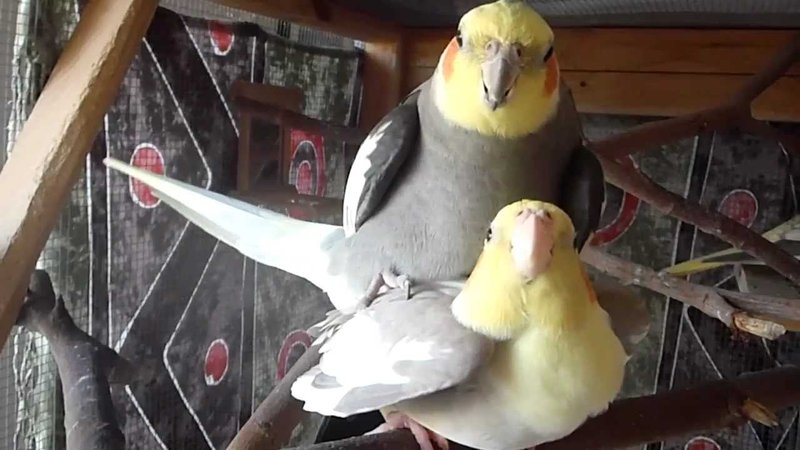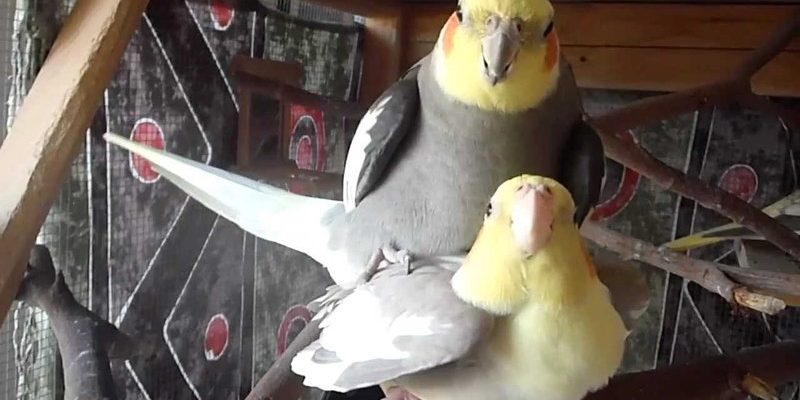
When cockatiels enter the courtship phase, they turn into master show-offs. With a mix of vocalization and body language, they express their intentions and feelings. Understanding these behaviors can deepen your appreciation for these feathered companions and even help you create a better environment for them. So, whether you’re a proud cockatiel owner or simply intrigued by these avian love stories, let’s take a closer look at what makes their mating rituals so fascinating.
Understanding Cockatiel Courtship
Cockatiel courtship is a display of vibrant affection and communication. Think of it as a theatrical performance where each bird plays its part to woo its partner. Male cockatiels often initiate courtship with a hearty song. These melodies are not just random chirps; they are carefully crafted calls designed to attract females. It’s like their version of serenading!
Once the male starts singing, he often engages in what’s called “head bobbing.” You might have seen this if you have a cockatiel at home; the male will rhythmically move his head up and down. This behavior serves as an invitation to the female, signaling that he is looking for a mate. The more enthusiastic the display, the better the chances of capturing the female’s interest.
Females also participate in the ritual, responding with soft whistles or bobbing of their own, creating a wonderful back-and-forth that can last for hours. Here’s the thing: even if the male is putting on a fantastic show, the female holds the power. If she’s not interested, she might simply ignore him. Understanding this dynamic is crucial for anyone looking to breed or care for cockatiels.
The Role of Body Language in Mating
Body language plays a significant role in how cockatiels communicate during courtship. When a male cockatiel is trying to win over a female, he often displays his most vibrant colors. The bright orange cheek patches and colorful feathers become even more pronounced. It’s like putting on the best outfit for a first date!
On top of that, they may spread their wings slightly and fluff up their feathers, making themselves appear larger and more impressive. A cockatiel that feels confident will strut around the perch, showing off its plumage. If you notice your cockatiel engaging in these behaviors, it’s a telltale sign that they are either interested in mating or are in the process of courting.
The female, in response, may adopt a relaxed posture, indicating her interest or readiness. If she fluffs her feathers back, it’s a positive sign! However, if she turns away or looks disinterested, it could mean she’s not ready to mate just yet. Paying attention to these signals can help in understanding your cockatiel’s emotional state.
Mating Rituals: The Big Moment
Once the courtship rituals have sufficiently warmed up the atmosphere, it’s time for the actual mating. This phase is often brief but crucial for the continuation of their lineage. When the moment arrives, the male will often perch next to the female, sometimes nuzzling or preening her feathers. This isn’t just a display of affection; it’s about establishing a bond.
During mating, the male will typically mount the female, which can happen quite quickly. The pair will engage in a brief, yet essential, act of copulation. Post-mating, you might notice the female acting more protective or affectionate. This supportive behavior is part of their natural instinct to care for any future eggs.
Here’s a fun fact: unlike some other bird species, cockatiels usually mate for life. Once they find a partner, they tend to remain with them long-term, strengthening their bond through these rituals. This lifelong companionship is part of what makes cockatiels such wonderful pets.
Creating the Right Environment for Courtship
If you have a pair of cockatiels and you want to encourage their courtship rituals, creating the right environment is key. Start with a spacious cage, providing plenty of room for them to move, play, and showcase their displays. A cozy nesting area will also help set the mood. Use materials like soft wood shavings or straw to create a welcoming spot where the female can feel safe.
Lighting plays a surprising role too! Natural light is essential, as it can trigger mating behaviors. Try placing their cage in a well-lit room where they can bask in sunlight without overheating. Just be cautious of direct sunlight during the hottest part of the day.
Additionally, consider adding some perches at different heights. Cockatiels love to climb and explore, and a multi-level environment can stimulate their natural behaviors. This setup mimics their natural habitat and encourages them to engage with each other, making courtship a lot easier and more likely.
Common Issues During Courtship
While courtship sounds fun and straightforward, it can come with its challenges. Sometimes, one bird may show more interest than the other—this can lead to stress for both birds. If you notice one cockatiel being overly aggressive or persistent, it’s essential to intervene. You might need to separate them temporarily to give the less interested bird a break.
Another issue can arise if the environment isn’t ideal. Stressful situations—like loud noises or too much human interaction—can disrupt courtship rituals. Cockatiels thrive on a calm and stable environment, so ensure they have a peaceful space to engage in their behaviors.
If you’re trying to breed them, it’s crucial to monitor their compatibility closely. Sometimes, even if they seem like a good match, they might not bond as well as expected. In those cases, it may be worth considering different pairing options.
Caring for Baby Cockatiels
After a successful courtship and mating, you might be fortunate enough to welcome baby cockatiels into your home. Watching them hatch and grow is a heartwarming experience. Typically, a female cockatiel will lay a clutch of 3-6 eggs. The incubation period lasts about 18 days, during which the female will take most of the responsibility while the male provides food and protection.
Once the eggs hatch, you’ll see tiny, helpless chicks that will depend entirely on their parents. They grow quickly, and by the time they’re about 6-8 weeks old, they’ll start to flutter around the cage. It’s essential to provide a safe environment for them during this time, as they’re incredibly vulnerable.
As the chicks grow, they’ll begin to eat solid food and can start to be weaned off their parents. This is an exciting time, as you get to see their personalities develop. Raising baby cockatiels can be a rewarding experience, and it solidifies the bond between the parents and their offspring.
Cockatiel courtship and mating rituals are not just fascinating aspects of their life; they are essential to their survival and well-being. These behaviors highlight the importance of relationships in the animal kingdom. From the charming songs to the colorful displays, every moment tells a story of love and connection.
As a cockatiel owner, understanding these rituals can inform how you care for your feathered friends. By providing a supportive environment, you can enhance their natural behaviors and create a happy home. Watching them interact and form bonds is truly a joy.
So next time you catch your cockatiels in the midst of their courtship dance, remember that you’re witnessing a beautiful part of nature. Their rituals not only enrich their lives but remind us of the joys of companionship, love, and family.

